Found a total of 10000 related content

PHP class inheritance: Correctly handle subclass constructor and parent class parameter passing
Article Introduction:This article explains in detail how to correctly call the parent class constructor and pass parameters in PHP class inheritance when the subclass overrides the constructor. It is important to point out that if the parent class constructor requires parameters, the subclass must provide these parameters when calling parent::__construct(), otherwise it will cause a runtime error. Through code examples, the correct practical methods are clearly demonstrated, aiming to help developers avoid common inheritance traps and ensure the integrity and stability of program logic.
2025-08-23
comment 0
799

PHP class inheritance: correctly call the parent class constructor and pass parameters
Article Introduction:This article discusses in detail how subclasses correctly call the parent class constructor and pass the required parameters in PHP class inheritance. When a subclass defines its own constructor, if the parent class constructor requires parameters, these parameters must be explicitly passed to the parent::__construct() method, otherwise it will cause a runtime error. The article guides developers to avoid such common pitfalls through specific examples and best practices, ensuring that the initialization logic in the inheritance chain is executed correctly.
2025-08-22
comment 0
966


Differences Between Static Method and Class Method in Python
Article Introduction:The main differences between @staticmethod and @classmethod are parameter passing, usage scenarios and inheritance performance. 1. In parameter passing, the static method does not automatically pass any implicit parameters, while the class method automatically receives the class object as the first parameter (cls). 2. In terms of usage scenarios, static methods are suitable for tool functions that are independent of classes and instances. Class methods are suitable for factory methods or situations where class state needs to be accessed/modified. 3. In inheritance, the static method is still bound to the class at the time of definition when invoking, and the class method will be automatically bound to the subclass that calls it. When selecting, you should decide which decorator to use based on whether the class or instance is needed and whether it is used to create the instance.
2025-07-07
comment 0
413
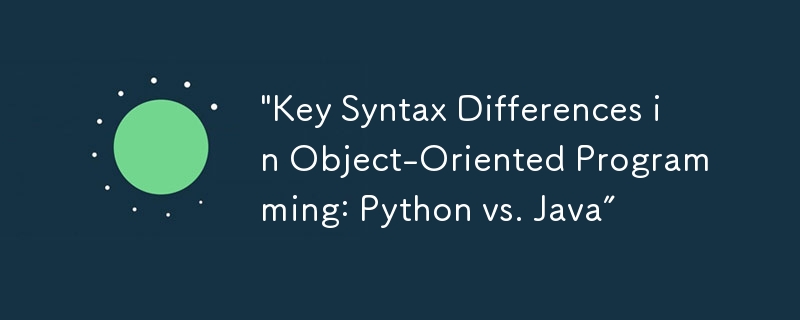
'Key Syntax Differences in Object-Oriented Programming: Python vs. Java”
Article Introduction:Object-oriented programming: Detailed explanation of classes and objects (Comparison of Python and Java)
This article will use Python and Java code examples to compare and explain the concepts of classes and objects, as well as the usage of constructors.
1. Classes and Objects
Python:
# Student class definition
class Student:
name = "Momo"
#Create object s1 of Student class
s1 = Student()
print(s1.name)
Java:
// Student class definition
class Student {
String na
2025-01-20
comment 0
900

What are Traits in PHP ?
Article Introduction:PHP traits enable code reuse in single inheritance contexts, offering benefits like reusability and simplified inheritance. They can be effectively combined with traditional inheritance to enhance class flexibility and modularity.
2025-04-30
comment 0
447

What is late static binding in PHP, and how does it differ from self::?
Article Introduction:In PHP, latestatic binding solves the limitations of self:: in inheritance through the static:: keyword. When using self::, it always points to the class that defines the method, not to call or inherit it; while static:: determines the target class at runtime, thus correctly referring to the subclass that is actually called. For example, if a method defined in the parent class is called by a subclass, self::class returns the parent class name, and static::class returns the child class name. 1. Use self:: to strictly refer to the current class definition; 2. Use static:: to support inheritance and allow subclass rewriting behavior; 3. Common application scenarios include factory mode
2025-06-17
comment 0
499
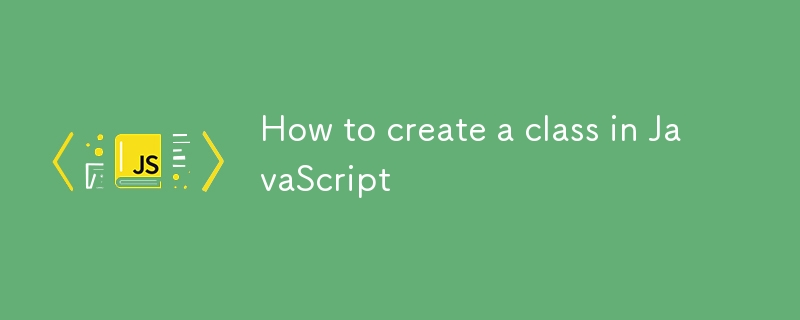
How to create a class in JavaScript
Article Introduction:The JavaScript class uses the class keyword definition, which is a syntactic sugar based on prototype inheritance. 1. The constructor constructor is used to initialize instance properties; 2. The method is directly defined in the class body without comma separating; 3. The static method can be defined through the static keyword for the class to be called directly; 4. Use extends to implement inheritance, and the subclass needs to use super to call the parent class constructor; 5. Support getter and setter encapsulated attribute access; the class must be declared first and then used, and the new call constructor cannot be omitted. These features jointly improve the readability and reusability of the code.
2025-08-21
comment 0
536
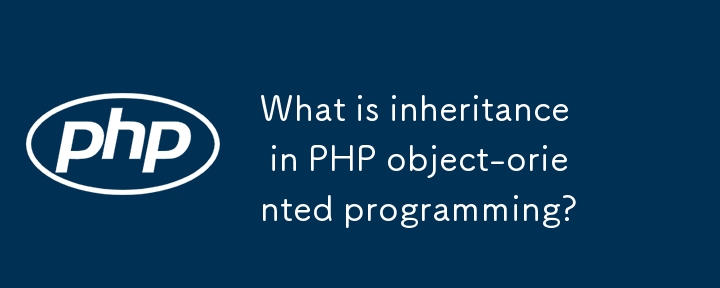
What is inheritance in PHP object-oriented programming?
Article Introduction:Inheritance in PHP object-oriented programming means that one class (subclass) can inherit the properties and methods of another class (parent class) to implement code reuse and clearer structure. 1. Create subclasses using extends keyword; 2. Subclasses can call parent class methods and modify their behavior through rewriting; 3. Applicable to "is-a" relationships to avoid deep inheritance hierarchy and tight coupling. For example, the Dog class inherits the Animal class and overrides the speak() method, which can both reuse code and customize functions.
2025-06-22
comment 0
901
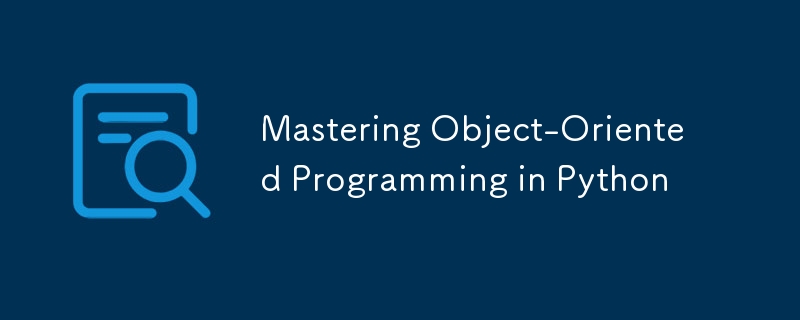
Mastering Object-Oriented Programming in Python
Article Introduction:To master object-oriented programming in Python, you need to pay attention to five aspects: 1. Understand the basic structure of classes and objects. Classes are templates and objects are instances. Defining through class, and initializing attributes with init; 2. Master the three pillars of encapsulation, inheritance and polymorphism, encapsulate hidden implementation details, inheritance avoids duplicate code, and implement different implementations of polymorphism. 3. Learn to use class attributes and static methods, and class attributes are shared with all instances. Static methods handle operations related to classes but do not rely on instances; 4. Clear the relationship between classes and instances, class definition attributes and methods, instances access but cannot modify class attributes; 5. Deepen understanding through practice, OOP can naturally reflect actual problems in actual projects.
2025-07-22
comment 0
355

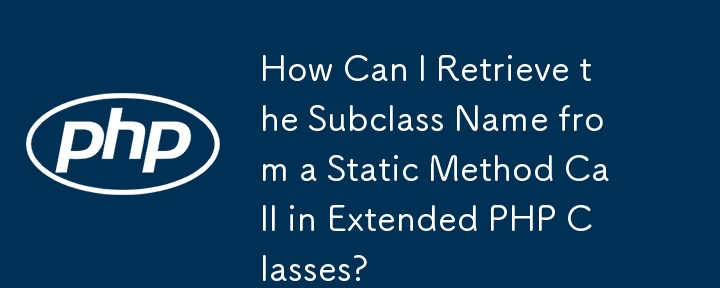
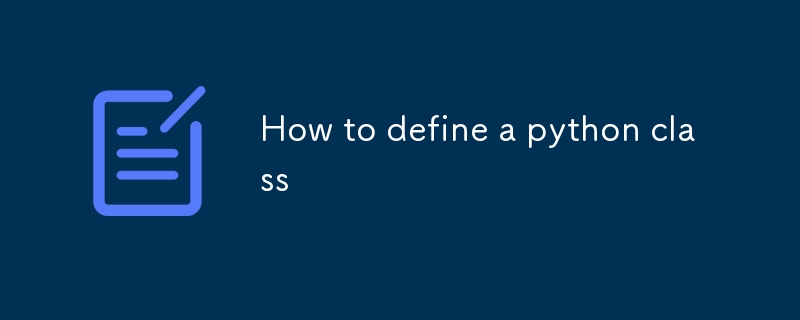
How to define a python class
Article Introduction:To define a Python class, you need to understand the structure and purpose, use the class keyword followed by the class name and colon, and use indentation to write attributes and methods internally. Class names use the big camel nomenclature, and attributes and methods encapsulate data and operations in the class. 1. Pass placeholder is available when defining an empty class; 2. The initialization attribute is implemented through the __init__ method, and the first parameter must be self; 3. The method definition must start with self, and the object itself is automatically passed on when called; 4. The inheritance of the class is specified in the parent class in the subclass brackets, and the parent class initialization logic is called with super().
2025-07-03
comment 0
264
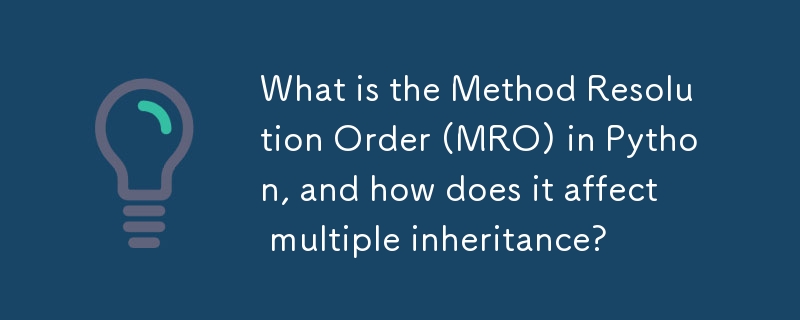
What is the Method Resolution Order (MRO) in Python, and how does it affect multiple inheritance?
Article Introduction:In Python, MRO (method parsing order) is the search order when looking for methods or attributes in class inheritance structures, especially in multiple inheritance. It uses C3 linearization algorithm to determine the order, ensuring that classes appear before their parent class, retain the parent class definition order and do not appear loops. For example, the MRO of classC(A,B) is [C,A,B,object], which can be viewed through __mro__ or mro(). When using super(), the corresponding method of the next class will be called according to the MRO chain. Understanding MRO can help avoid errors caused by accidental calls.
2025-06-19
comment 0
609

How to Create Classes and Objects in PHP 7?
Article Introduction:This article explains class and object creation in PHP 7. It details the differences between classes (blueprints) and objects (instances), illustrates object-oriented programming principles (encapsulation, abstraction, inheritance, polymorphism), a
2025-03-10
comment 0
424
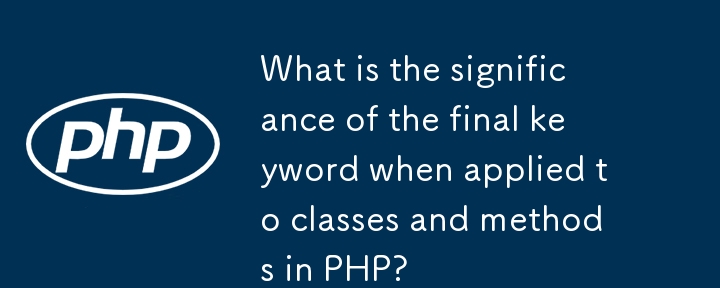
What is the significance of the final keyword when applied to classes and methods in PHP?
Article Introduction:In PHP, the final keyword is used to restrict the inheritance and rewrite of classes and methods to ensure that the critical code is not modified. When used in a method, final prevents subclasses from rewriting the method. For example, after importantMethod() is declared as final, any subclasses that attempt to rewrite will cause fatal errors; their usage scenarios include security-related functions, core logic, and unchangeable API behavior. When used in a class, final prevents the class from being inherited. For example, after UtilityClass is declared as final, any subclass attempts to inherit will fail; common uses include immutable objects, tool classes, and performance optimization. Using final can improve code security, encourage combinations to be better than inheritance, and slightly improves
2025-06-13
comment 0
1043

What is Inheritance and How Does it Work in PHP 7?
Article Introduction:This article explains inheritance in PHP 7, showcasing its syntax and functionality using a parent-child class example. It details advantages (code reusability, maintainability, extensibility) and disadvantages (tight coupling, fragility). The arti
2025-03-10
comment 0
1099
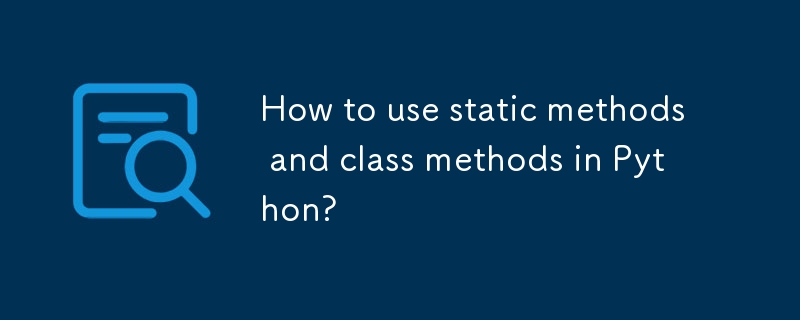
How to use static methods and class methods in Python?
Article Introduction:Static methods and class methods are used to deal with methods that do not depend on specific instances. Static methods do not need to access instances or classes. They are suitable for tool functions and are decorated with @staticmethod; class methods receive cls parameters, can access class data or create alternative constructors, and use @classmethod to decorate. They are suitable for class state operations or inheritance scenarios. The selection basis is the data type required to access by the method. The difference between the three lies in the parameters and usage scenarios.
2025-08-05
comment 0
225

What are traits in PHP, and how do they address limitations of single inheritance?
Article Introduction:PHP supports single inheritance, but trait can reuse methods from multiple sources. Trait is a code block containing reusable methods and can be introduced into the class to avoid the problem of multiple inheritance. For example, after defining Loggertrait and being used by the User class, the User class can use the log method. Trait is not an independent class, has no attributes and does not have "is-a" relationship. The way trait solves the single inheritance limit is to allow a class to use multiple traits at the same time, such as DatabaseTrait and LoggerTrait, thereby combining functions. When multiple traits have the same name method, you can specify which method to use insteadof, or use as a method to alias the method to distinguish calls.
2025-06-13
comment 0
640

What are traits in PHP? How do they promote code reuse?
Article Introduction:The article discusses PHP traits, introduced in PHP 5.4, which enable horizontal code reuse across classes, reducing duplication. Traits offer advantages like multiple inheritance, simpler class hierarchies, and better code organization. The article
2025-03-19
comment 0
857



















